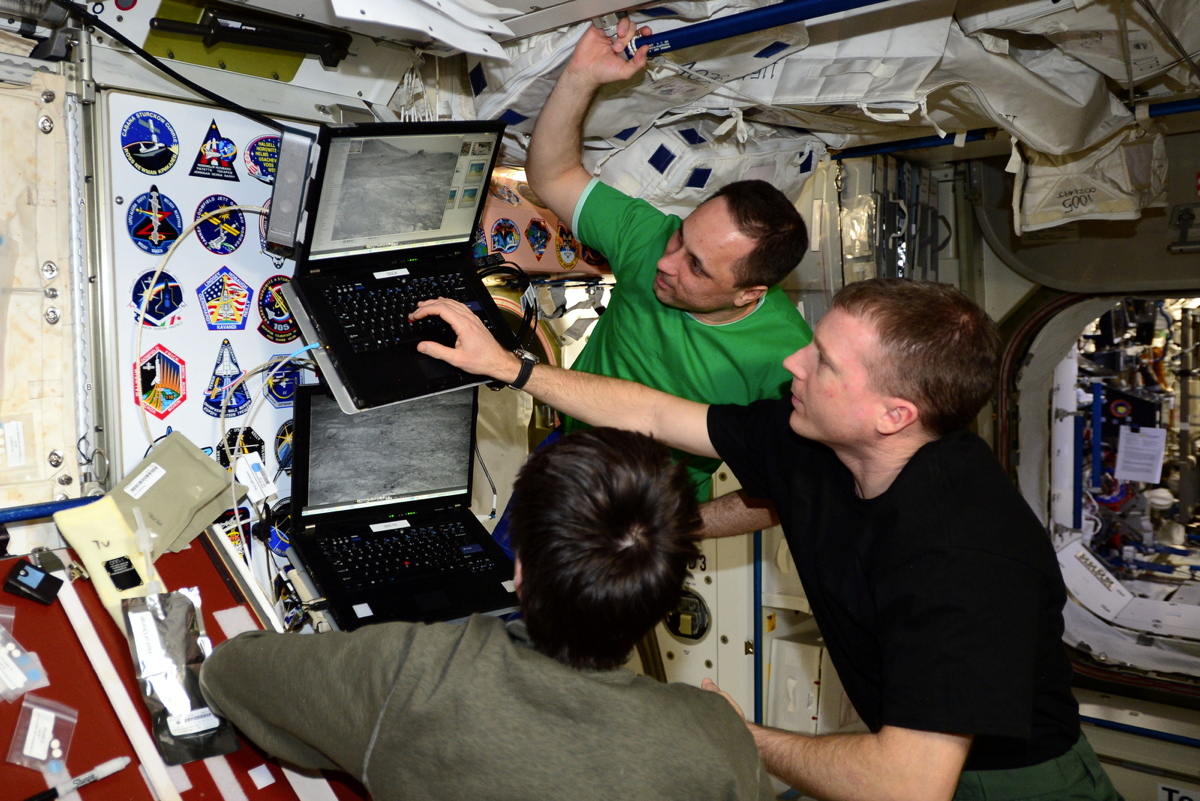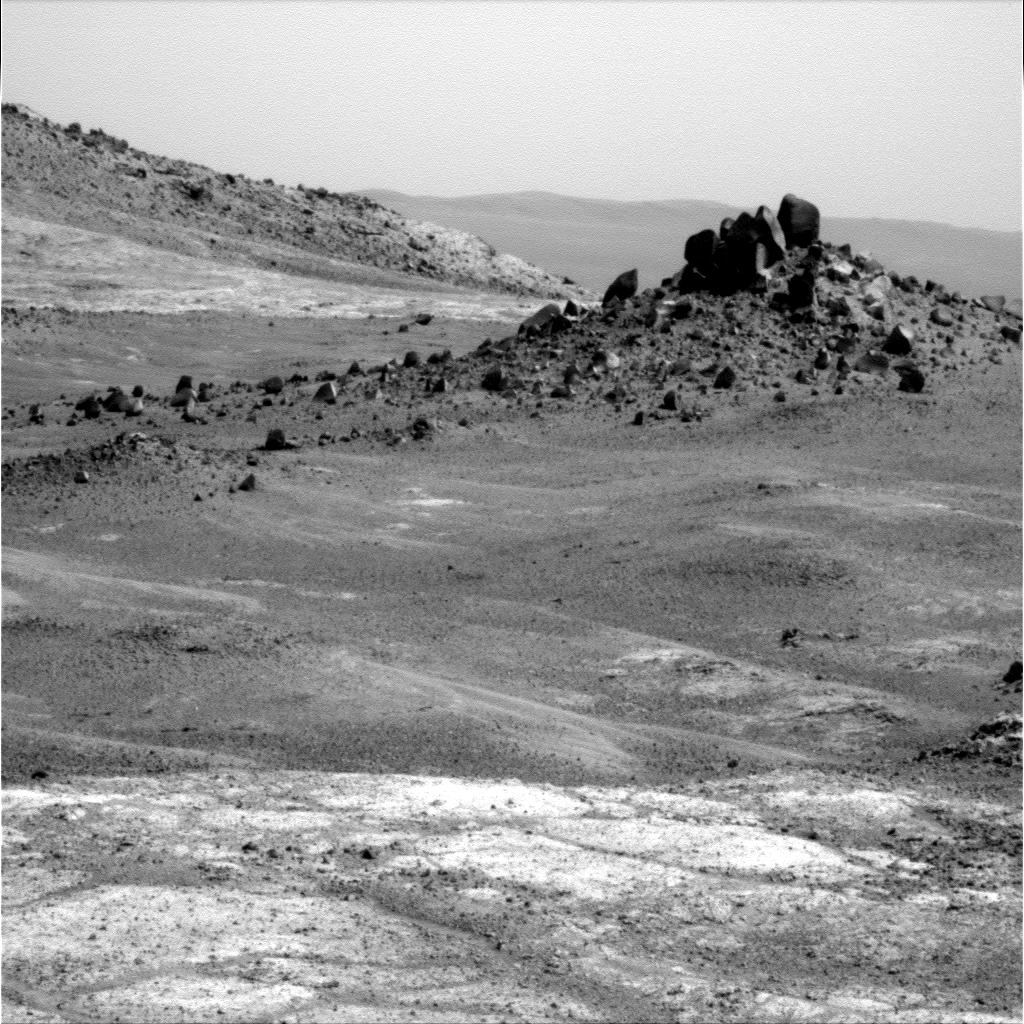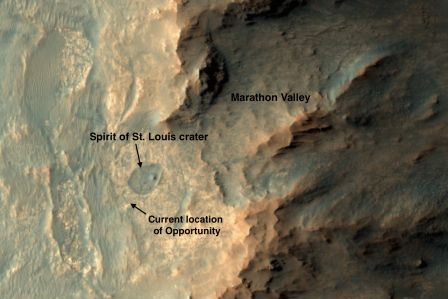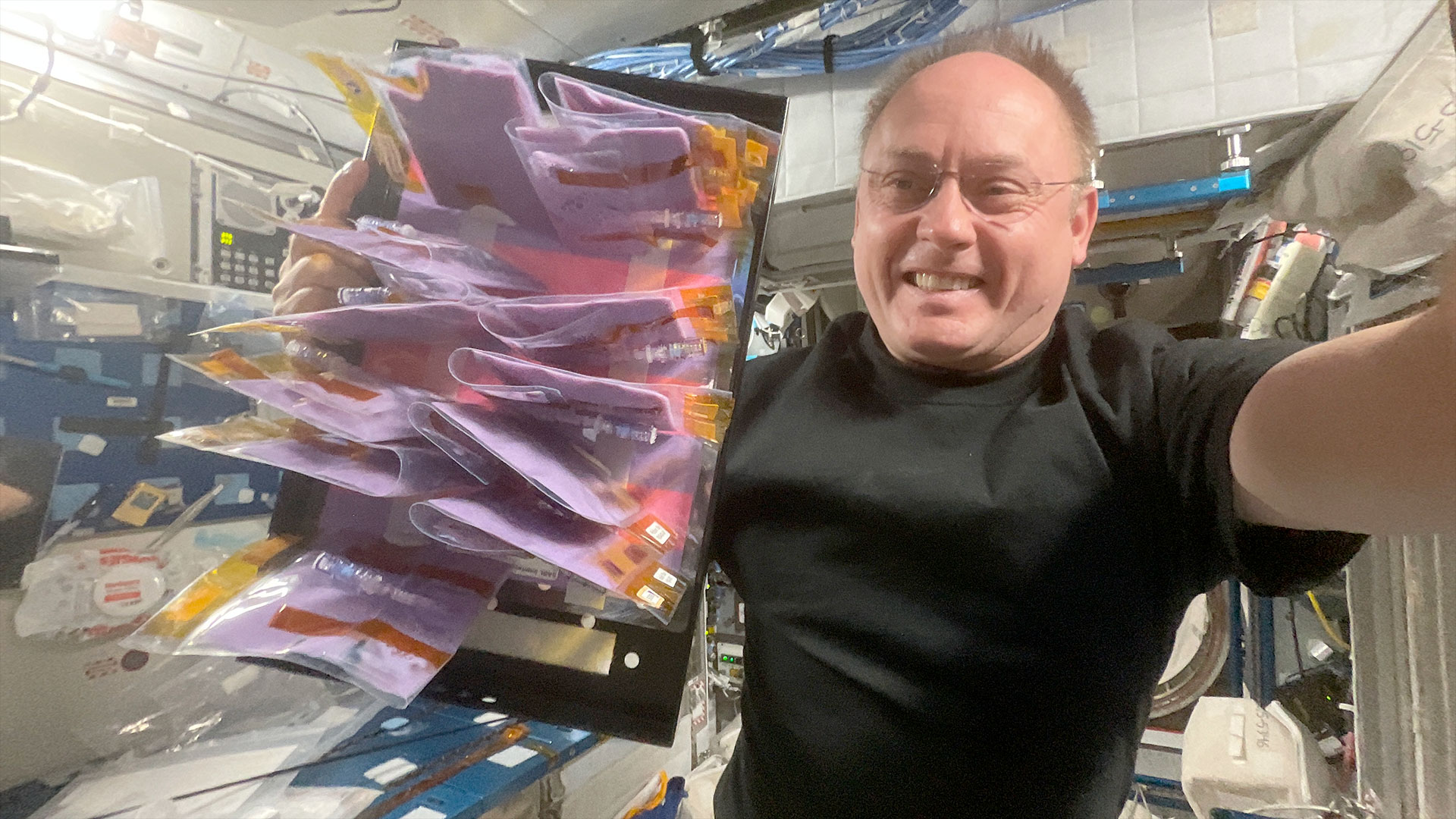
Space Station Crew Picks 'Targets of Opportunity' for Mars Rover

Astronauts on the International Space Station have assisted in picking spots on Mars for investigation by the Opportunity rover now wheeling about on the Red Planet.
The Expedition 43 crew "had a great chance to 'target' some Martian rocks for sampling by the Opportunity rover," NASA astronaut Terry Virts, the station's commander, wrote in a recent Twitter post.
Virts, along with Russian cosmonaut, Anton Shkaplerov, and the European Space Agency's Samantha Cristoforetti used some of their dinner time to look over select imagery taken by Opportunity. [Photos of Mars by the Opportunity Rover]
The idea to connect the station crew with Mars photos was sparked by astrogeologist, James Rice, Jr., Mars Exploration Rover (MER) Geology Team Leader and Senior Scientist at the Planetary Science Institute.

Targets of Opportunity
A set of navigation camera images taken by the Opportunity rover were uploaded to the crew on the International Space Station (ISS). Using their laptops, the space travelers picked "targets of Opportunity."
"It is pretty darn cool seeing those MER images up on the ISS," Rice said.
"I asked them to pretend they were on Mars, walking there, and what would they take pictures of … what's scientifically interesting and things that caught their eye," Rice told Inside Outer Space.
Breaking space news, the latest updates on rocket launches, skywatching events and more!

Natural fit
"We heard from my good friend Jim Rice, who interviewed with me to be an astronaut back in 2000, and with whom I've done several Mars related events with over the past decade," Virts explained. "It seemed like a natural fit for astronauts in space to be involved with robotic geology on another planet."
"This very well may be a paradigm we use as we explore the solar system. Jim offered my ISS Expedition 43 crew the chance to choose a rock, or location, to target by the Opportunity rover. Of course we all loved it … and really enjoyed being involved with real time operations on Mars and at JPL," Virts said. "What a thrill and honor! Now we are anxiously awaiting the results from Mars, but the initial word is that there may be some interesting findings about this particular location," he said.
Crew-selected scenes
Opportunity has recently driven into an extremely scientifically interesting area on Mars, Rice said. One puzzler is the Spirit of Saint Louis crater.
"It's not very big, only 35 by 27 meters and it's very shallow. We don't know what it is yet…an impact crater, or perhaps there is a hydrothermal and or volcanic story here, but with our capable rover and outstanding team we will figure it out," Rice added.
"That's the value of a rover. Every time you rove … you've got a brand new mission," Rice said.
Once the crew-selected scenes of Mars territory are back on Earth, they will be then relayed to the station, he said.
In many ways, using the space station as a test bed for select-a-shot imagery of the Mars landscape could be a portent of things to come. That is, future Mars-orbiting crews could run robots on the Red Planet that would scrutinize select areas of Martian terrain.

Target rich site
NASA's Opportunity rover landed on Mars in 2004 and is currently sitting on the apron that surrounds Spirit of Saint Louis crater, roughly an 80 foot (25-meters) wide shallow crater in front of the entrance to Marathon Valley.
Arvidson said ground controllers will then direct the rover into Spirit of Saint Louis crater to make measurements "to figure out if it is an impact crater or something else," he told Inside Outer Space.
Afterward, Opportunity will head east into Marathon Valley, Arvidson said, where multiple observations from The Compact Reconnaissance Imaging Spectrometer for Mars (CRISM) aboard the Mars Reconnaissance Orbiter Mars orbit document the widespread presence of smectite clay minerals.
"We'll probably spend the next winter in this area, since it is very, very target rich," Arvidson said.
Leonard David has been reporting on the space industry for more than five decades. He is former director of research for the National Commission on Space and is co-author of Buzz Aldrin's 2013 book "Mission to Mars – My Vision for Space Exploration," published by National Geographic, with a new updated paperback version to be released in May. Follow us @Spacedotcom, Facebook or Google+. Published on Space.com.
Join our Space Forums to keep talking space on the latest missions, night sky and more! And if you have a news tip, correction or comment, let us know at: community@space.com.

Leonard David is an award-winning space journalist who has been reporting on space activities for more than 50 years. Currently writing as Space.com's Space Insider Columnist among his other projects, Leonard has authored numerous books on space exploration, Mars missions and more, with his latest being "Moon Rush: The New Space Race" published in 2019 by National Geographic. He also wrote "Mars: Our Future on the Red Planet" released in 2016 by National Geographic. Leonard has served as a correspondent for SpaceNews, Scientific American and Aerospace America for the AIAA. He has received many awards, including the first Ordway Award for Sustained Excellence in Spaceflight History in 2015 at the AAS Wernher von Braun Memorial Symposium. You can find out Leonard's latest project at his website and on Twitter.
